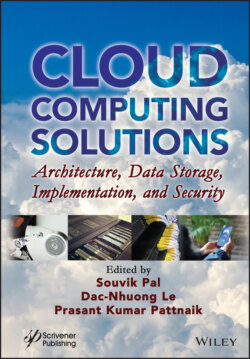Читать книгу Cloud Computing Solutions - Группа авторов - Страница 27
1.3.2 Levels of Deployment
ОглавлениеCluster grids, enterprise grids, and global grids are three logical levels in the deployment of grid computing environment [10]:
Cluster Grids: The cluster grids are the basic form of a grid environment which consists of multiple computer systems interrelated by means of a network. Cluster grids might include distributed workstations and servers, and also contain centralized physical resources in a datacenter environment. High-performance jobs and high throughput is supported by cluster grid. Some examples of the cluster grid framework are groups of multi-processor high-performance computing (HPC), compute farms, and networks of workstations (NOW).
Enterprise Grids: Enterprise grids may be formed by combining multiple cluster grids. Multiple projects or departments can be enabled by enterprise grids to distribute computing and physical resources in a supportive way. Enterprise grids generally may have the resources from multiple domains situated in a similar region.
Global Grids: Global grids are a group of enterprise grids, each having different agreed upon protocols and universal usage policies, but not necessarily a similar manner of execution. Computing and physical resources might be geographically distributed, and they are used for connecting different sites throughout the globe. Global grids give the intensity of appropriated resources to users anywhere on the planet.
Figure 1.5 deals with cluster grids, enterprise grids and global grids. Cluster grids consist of multiple systems denoted as Node 1...., with Node N interconnected via the network.
Figure 1.5: Scenario of global grid consisting of cluster and enterprise grid.
This kind of grid may contain servers, workstations, and data centers. All the components are acquired and used by a single department or administrative domain. When the need for resources increases, multiple cluster grids work together to make an enterprise grid. Multiple administrative domains may share the resources when they are in enterprise grids located in the same geographic location. Meanwhile, in contrast to enterprise grids, global grids are a compilation of enterprise grids. Each of them agree upon universal usage policies and protocols but it is not mandatory that executions will be the same. Users have the authority to use the distributed resources anywhere in the world.
